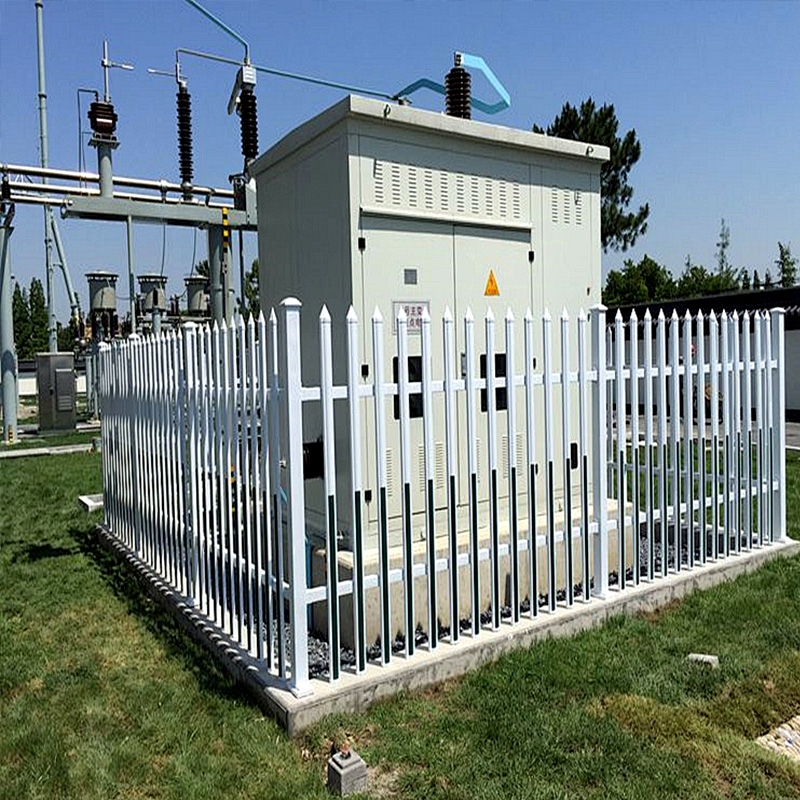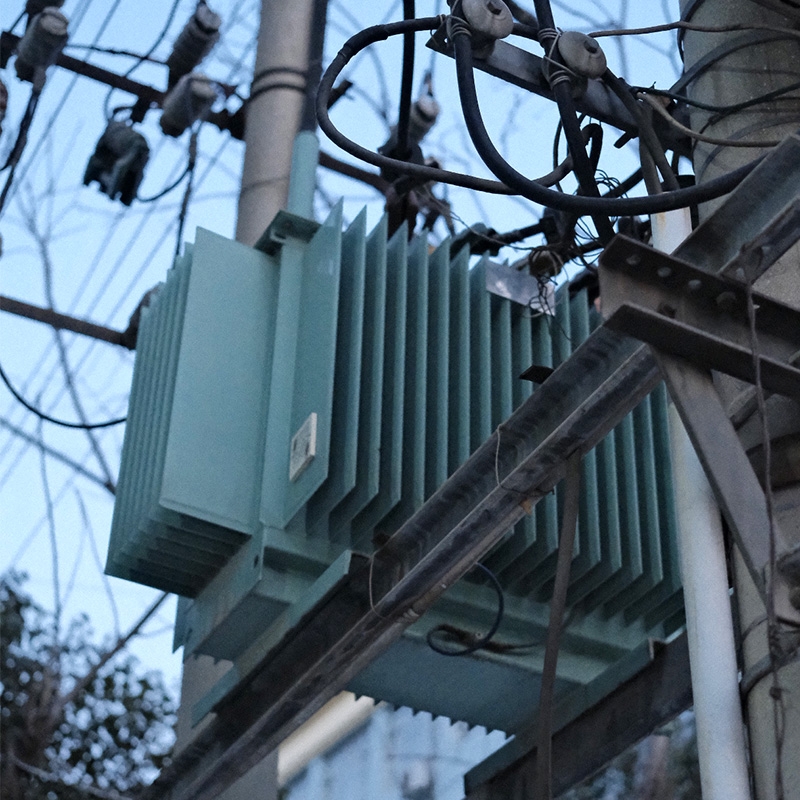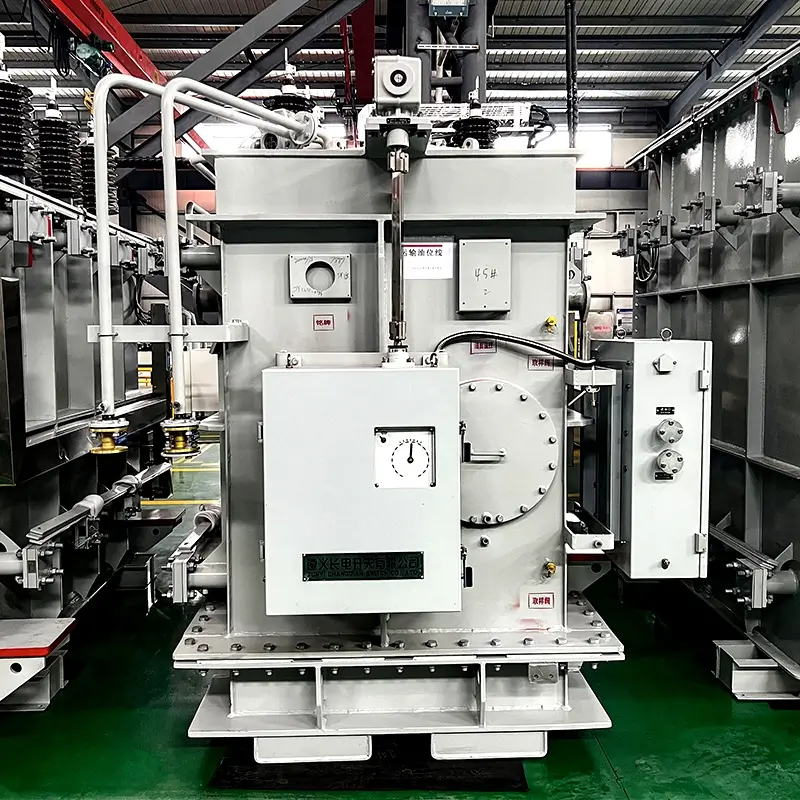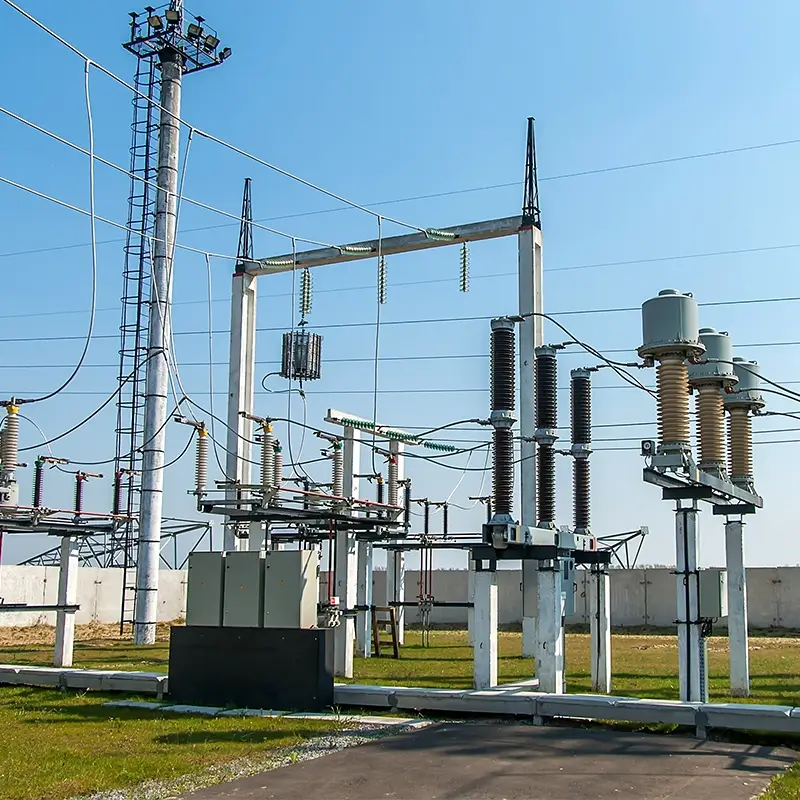Iron loss and copper loss of transformer
Any kind of electrical equipment will suffer losses during long-term operation, and Power Transformers are no exception. In the loss of power transformers, it is mainly divided into two parts: copper loss and iron loss.
Copper loss
Definition and principle
Copper plays an important role in the transformer, the winding of the transformer usually uses copper wires, and the "copper loss" in the transformer is the loss of copper wires. The "copper loss" of the transformer is also known as the load loss, the so-called load loss, that is, the variable loss, is changing. When the transformer is running under load, the current will have resistance through the wire, resulting in resistance loss. According to Joule's law, the current flowing through this resistor will generate Joule heat, and the greater the current, the greater the power loss. Thus, the resistance loss is proportional to the square of the current and is independent of the voltage. It is precisely because it changes with the size of the current, so the copper loss (load loss) is a variable loss, it is also the main loss in transformer operation.
Influencing factor
Current size: As mentioned above, copper loss is proportional to the square of the current, so the size of the current is a key factor affecting copper loss.
Winding resistance: The resistance of the winding directly affects the copper loss. The greater the resistance, the higher the copper loss. The number of coil layers: The more the number of coil layers, the longer the path of current flow in the winding, the resistance will increase correspondingly, resulting in increased copper loss.
Switching frequency: The effect of switching frequency on the copper loss of the transformer is directly related to the distribution parameters of the transformer and the load characteristics. When the load characteristics and distribution parameters are inductive, the copper loss decreases with the increase of switching frequency. The copper loss increases with the increase of switching frequency when they are both capacitive.
Temperature effect: The load loss is also affected by the temperature of the transformer, while the leakage flux caused by the load current will produce eddy current loss in the winding and stray loss in the metal part outside the winding.
Calculation mode
There are two formulas
1. Formula based on rated current and resistance:
Copper loss (unit :kW) = I² × Rc × Δt
Where I is the rated current of the transformer, Rc is the resistance of the copper wire, and Δt is the operation time of the transformer.
2. Formula based on rated current and total copper resistance:
Copper loss = I² x R
Where, I represents the rated current of the transformer, and R represents the total copper resistance of the transformer. The total copper resistance R of the transformer can be calculated by the following formula:
R = (R1 + R2) / 2
R1 indicates the primary side copper resistance of the transformer, and R2 indicates the secondary side copper resistance of the transformer.
Methods of reducing copper damage
Increase the winding cross-sectional area of the transformer: reduce the conductor resistance, thereby effectively reducing the transformer copper loss.
Use high-quality conductor materials such as copper foil or aluminum foil to reduce winding resistance.
Reducing the light-load operation time of the transformer: limiting the proportion of the light-load operation time of the transformer is conducive to reducing the copper loss of the transformer.
Iron loss
Definition and principle
Unlike copper loss, the iron loss of the transformer has nothing to do with factors such as winding and current size, as the name suggests, the iron loss is related to iron, which is generated by the iron core. The iron loss of the transformer is also called "no-load loss", because it exists in the full load and zero load state of the transformer, and is a fixed loss of the transformer. However, in the load, the power loss will decrease with the decrease of the electric field strength.
sort
The iron loss of transformer can be divided into hysteresis loss and eddy current loss.
● Hysteresis loss
The working principle of the transformer is based on the principle of electromagnetic induction to achieve the rise and fall voltage and current changes, and the magnetic flux in the transformer is flowing on the iron core, the iron core has a magnetic resistance to the magnetic flux, just like the conductor has a resistance to the current, it will also generate heat, such a loss is called "hysteresis loss".
● Eddy current loss
When the primary winding of the transformer is energized, the magnetic flux generated by the coil flows in the core, because the core itself is also a conductor, in the plane perpendicular to the magnetic force line will induction potential, this potential forms a closed loop on the cross section of the core and generates current, like a vortex, so it is called "vortex". The loss caused by this eddy current is called "eddy current loss". It is also because the iron core creates eddy currents that it is made into a thin piece, because the thinner the resistance, the lower the current.
Influencing factor
Operating voltage and frequency: Iron loss is related to the operating voltage and frequency of the transformer, because these factors affect the magnetic field strength and hysteresis in the iron core.
Core material: The hysteresis properties of the core material will affect the size of the iron loss. If the core material is not selected well, the hysteresis loss will increase.
Manufacturing process: The manufacturing process of the transformer also has a certain impact on the iron loss. For example, the lamination method of the iron core, insulation treatment, etc., will affect the size of the iron loss.
Calculation mode
1. Based on the formula of rated current, hysteresis and resistance loss:
Iron loss in kVA = I² x (Rm + Ra)
Where I is the rated current of the transformer, Rm is the hysteresis loss of the iron core, and Ra is the resistance loss of the iron core.
2. Formula based on constant, magnetic flux density and operating frequency:
P iron = Kf × (Bm)^2 × f
Where, P iron is the iron loss, Kf is the constant, Bm is the magnetic flux density, and f is the transformer operating frequency.
Reduction method
Select high-quality core materials: Select core materials with small hysteresis loss, which can reduce the iron loss of the transformer.
Optimize the manufacturing process: reduce the iron loss by improving the lamination method of the iron core, insulation treatment and other manufacturing processes.
Reasonable design: In the transformer design stage, by optimizing the structural design and parameter selection, reduce the iron loss.




